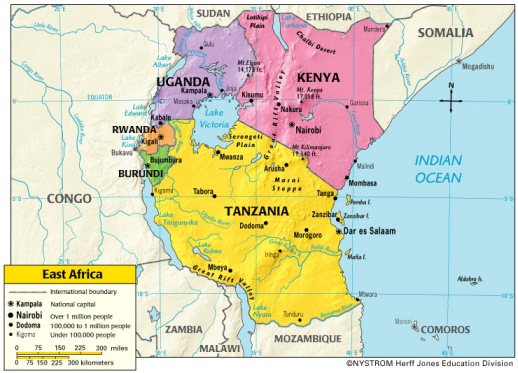 After the recent introduction of the new 10 dinar note Tunisia will issue a new banknote in the first quarter of 2014. This time the note will have a denomination of 5 dinar.
After the recent introduction of the new 10 dinar note Tunisia will issue a new banknote in the first quarter of 2014. This time the note will have a denomination of 5 dinar.
Not much more is known at this moment since the only source for this news are the remarks made by the vice-gouverneur of the Central Bank of Tunisia, mr. Mohamed Rekik.
Via
 Interesting news from the small kingdom Bhutan: the low denominations of 1 and 10 ngultrum will no longer be printed by De la Rue on paper but by printer Giesecke and Devrient on a paper/polymer substrate made by Louisenthal. Hybrid banknotes have a cotton core that gives the substrate the security benefits of traditional banknotes. This is surrounded by a polyester laminate that increases the durability of the banknote even under extreme climatic conditions. Bhutan's 1 and 10 ngultrum banknotes in particular are subjected to high levels of wear and, up to now, had to be regularly replaced.
Interesting news from the small kingdom Bhutan: the low denominations of 1 and 10 ngultrum will no longer be printed by De la Rue on paper but by printer Giesecke and Devrient on a paper/polymer substrate made by Louisenthal. Hybrid banknotes have a cotton core that gives the substrate the security benefits of traditional banknotes. This is surrounded by a polyester laminate that increases the durability of the banknote even under extreme climatic conditions. Bhutan's 1 and 10 ngultrum banknotes in particular are subjected to high levels of wear and, up to now, had to be regularly replaced.
Statistically, Bhutan is one of the poorest nations on Earth, although its average income per capita is higher than in neighboring India. Jigme Singye Wangchuk, King of Bhutan since 2006 and pictured on the front of the 10 ngultrum banknote, has coined the term "gross national happiness" to describe the cultural objective and he formulated this as an important objective of Bhutan's economic policy. In line with this, Buddhist symbols of happiness also adorn the new banknotes. Alongside Ecuador, Bhutan is one of the few countries that has not set out a growth-oriented economic model in its constitution.
Just before the end of the year I received a new addition to my collection: a 1 dollar Silver Certificate from the United States (series 1935-E, P416D2e).
Silver Certificates are a type of representative money printed from 1878 to 1964 in the United States as part of its circulation of paper currency. They were produced in response to silver agitation by citizens who were angered by the Fourth Coinage Act, which had effectively placed the United States on a gold standard. The certificates were initially redeemable in the same face value of silver dollar coins, and later in raw silver bullion. Since 1968 they have been redeemable only in Federal Reserve Notes and are thus obsolete, but are still valid legal tender.
Normally I'm not much of a collector of US notes. Mainly because I think they have boring designs and also because a lot of the collectors of US notes I know are obsessed with special serial numbers. For me that's not the collecting of banknotes but of numbers on an arbitrary item. This Silver Certificate however has an interesting numismatic story so I welcome it in my collection.
 From the website of the Bank of England regarding the future choice of characters on new banknotes:
From the website of the Bank of England regarding the future choice of characters on new banknotes:
On 24 July 2013, the Bank of England announced that it would review the process and criteria for selecting characters to appear on its banknotes. The aim was to establish a set of principles to guide the choice of historical characters that would ensure the Bank’s choices commanded broad respect and legitimacy and to establish a process for choosing historical characters that would, and would be seen to, ensure the delivery of those principles.
Read More
 An article on Chapter97.org, which links to an interview with chief of the Belarusian National Bank Nadzezhda Yermakova on Zviazda.by, mentions that Belarus won't see a redenomination next year.
An article on Chapter97.org, which links to an interview with chief of the Belarusian National Bank Nadzezhda Yermakova on Zviazda.by, mentions that Belarus won't see a redenomination next year.
"We plan a redenomination, but it's too early to speak about the date,” Nadzezhda Yermakova noted. The National Bank chief said the inflation rate of under 10% was needed to carry out redenomination, otherwise large denomination banknotes would appear again due to the price growth.
As the inflation rate is expected to be 11% the next year, it's too early to discuss the redenomination in 2014, Nadzezhda Yermakova says. “We have new banknotes, we already printed them. But it's too early to issue them,” the National Bank chief noted.
Lukashenka also said earlier that banknotes for the redenomination had been printed.
“Redenomination is not a problem. It's a technical issue. We have printed banknotes. They have been in warehouses for some years, but it is more important for us to have stability on the currency market,” he said at a press conference for Russian media in Minsk. “It's better to carry it [redenomination] out when the situation on the currency market becomes more stable."
So perhaps we will see new Belarusian banknotes in 2015?
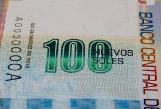
 The Central Bank of Peru (Banco Central de Reserva del Perú) has issued a press release on the introduction of a revised 100 nuevo sole note.
The Central Bank of Peru (Banco Central de Reserva del Perú) has issued a press release on the introduction of a revised 100 nuevo sole note.
The note has been issued on 18 December 2013 and has the same design as the previous issue but with the addition of a vertical number 100 in SPARK ink (developed by the company SICPA).
 An article on Tengrinews.kz mentions that the introduction of the already printed new 20,000 tenge note has been postponed by the National Bank of Kazakhstan. The reason for this decision is the fear for high inflation. At this moment the 10,000 tenge is the highest denomination in the country (this note was Banknote of the Year 2011 by the way).
An article on Tengrinews.kz mentions that the introduction of the already printed new 20,000 tenge note has been postponed by the National Bank of Kazakhstan. The reason for this decision is the fear for high inflation. At this moment the 10,000 tenge is the highest denomination in the country (this note was Banknote of the Year 2011 by the way).
The National Bank has stated that they don't rule out the introduction of the 20,000 tenge note in the future but they don't expect it to be issued very soon.
Update 21 November 2015: there is a new discussion about introducing this note after all.
 Several reports mention that the central bank of Morocco, Bank Al-Maghrib, has issued the new 20 and 50 dirham notes on 19 December 2013 as part of the new series of banknotes which was introduced earlier this year. Originally the notes were supposed to be issued during national festivitites. The 50 dirham at the anniversary of the Green March on 6 November and the 20 dirham on 11 January, Morocco's independance day. What has caused the delay is unknown.
Several reports mention that the central bank of Morocco, Bank Al-Maghrib, has issued the new 20 and 50 dirham notes on 19 December 2013 as part of the new series of banknotes which was introduced earlier this year. Originally the notes were supposed to be issued during national festivitites. The 50 dirham at the anniversary of the Green March on 6 November and the 20 dirham on 11 January, Morocco's independance day. What has caused the delay is unknown.
The 20 dirham note shows the cities of Casablanca and Rabat on the back. The 50 dirham note a tree and Ouzoud Falls.
 The new €10 banknote will be unveiled on 13 January 2014 and start circulating later in the year. To draw attention to its security features, the European Central Bank has launched an online competition for European Union residents over 18 years old. Players have to uncover four of these security features and also guess the number of euro banknotes in circulation in the euro area on 31 December 2013. The competition closes at 11.59 p.m. CET on 12 January 2014.
The new €10 banknote will be unveiled on 13 January 2014 and start circulating later in the year. To draw attention to its security features, the European Central Bank has launched an online competition for European Union residents over 18 years old. Players have to uncover four of these security features and also guess the number of euro banknotes in circulation in the euro area on 31 December 2013. The competition closes at 11.59 p.m. CET on 12 January 2014.
The interesting thing are the awards:
- 20 high-scoring players will win €5 VIP banknotes from the Europa series personally signed by the President of the European Central Bank.
- 80 runners-up will receive a commemorative €10 banknote from the first series.
A commemorative €10 banknote? I guess the presentation of the note in a frame or a folder will be the commemorative element because I doubt they will actually print a commemorative note.
Anyway, time to start playing!
 Not really a surprise but the Bank of England (BoE) has decided that the new £5 and £10 will be printed on polymer. About three months ago, the BoE has taken sample £5 and £10 notes to shopping centres, showing the public that they are secure, cheaper and greener than paper-based money. And the public loved the new notes: 87% favoured the new notes over the old material.
Not really a surprise but the Bank of England (BoE) has decided that the new £5 and £10 will be printed on polymer. About three months ago, the BoE has taken sample £5 and £10 notes to shopping centres, showing the public that they are secure, cheaper and greener than paper-based money. And the public loved the new notes: 87% favoured the new notes over the old material.
The Bank said it expected to commission polymer producer Innovia to produce the sheets of plastic. This will be quite a blow to De La Rue, the supplier of banknotes to the BoE for a decade. De La Rue is likely to retain the contract to design and print the notes at the BoE-owned plant it operates in Debden.
The new notes will be smaller (by around 15%). The first polymer note to be printed and issued will be the £5 note with the image of Sir Winston Churchill. This note will enter circulation in 2016, shortly followed by the £10 note with the image of Jane Austen. The BoE has indicated that a decision would be made "in due course" on whether to make the most common note, the £20, also from polymer. But I would be surprised if it would be anything else than polymer.
 The National Bank of Kazakhstan has issued a new commemorative note of 1000 tenge on 12 December 2013. The note meassures 134 x 70 mm. From the press release:
The National Bank of Kazakhstan has issued a new commemorative note of 1000 tenge on 12 December 2013. The note meassures 134 x 70 mm. From the press release:
"Dedicated to Kultegin – the Monument of Turkic Runic Writing – signed by Kelimbetov K.N., the Chairman of the National Bank of the Republic of Kazakhstan. The obverse side of the banknote is a follows: the prevailing images are vertical. The key images are: the monument (Kazak Eli) on the right side of the banknote and images of the flying doves in the bottom right. In the middle of the left part there is a fragment of Kultegin sculpture. In the upper part there are the images of the symbols of state of the Republic of Kazakhstan: the National Emblem and State Flag.
The reverse side is as follows: the prevailing images are horizontal. The key images are: petroglyphic drawings of Turkic warriors and the monument of Turkic writing in the background. Lower left and right top there is a digital notation of the banknote nominal value and in the bottom center there is a literal notation of the nominal value in the Russian language. On the left side there is a holographic band of 12 mm wide with the image of a fragment of the State Flag, the National Bank’s logo and a legend ('Eskertkish tenge').
The circulation of the commemorative banknote of 1,000 tenge is 10,000,000."

 The Central Bank of Russia (CBR) has announced that a symbol for its ruble has been chosen. Over the last month more than 280,000 people took part in a vote to choose the new symbol. The chosen graphic uses the Cyrillic letter “P” which has its lower part crossed by a horizontal strip, Elvira Nabyullina, CBR chairman said. This version of the ruble symbol got more than 61% of the votes, with the second most popular receiving about 19% of votes.
The Central Bank of Russia (CBR) has announced that a symbol for its ruble has been chosen. Over the last month more than 280,000 people took part in a vote to choose the new symbol. The chosen graphic uses the Cyrillic letter “P” which has its lower part crossed by a horizontal strip, Elvira Nabyullina, CBR chairman said. This version of the ruble symbol got more than 61% of the votes, with the second most popular receiving about 19% of votes.
Russia hopes that the new symbol will get the same recognizability and standing as the $, € or the £. The symbol will appear on future coins and banknotes.
Below are, along with the winner, the other proposed symbols who didn't make it:
It is tradition in China to send gifts to fiancees. A 'tuhao' (a new word meaning 'rich people') in North China's Tianjin gave a large fortune to his daughter, including several properties and a one-million-yuan car. But the 99 sheets of uncut banknotes, which include some foreign currencies, are the most eye-catching.
One week after its inception my space and astronomy themed blog has 26 banknotes from 17 countries covering subjects from astronauts to planets to telescopes. And of course as always: there is much more to come!
Be sure to have a look or just click the astronaut image on the right.
The Economist has a very interesting article on the growing number of currency unions in Africa. It talks about the differences between the unions, their chances for the future and of course, being The Economist, their biggest threats.
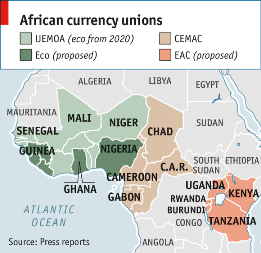 THE euro crisis has put most people off currency unions. But not in Africa, it seems. In November the leaders of five countries of the East African Community (EAC) agreed to form a monetary union within ten years. A month before West African politicians agreed on a plan to introduce a new shared currency, the eco, over the next few years. It should eventually subsume West Africa’s existing currency bloc—but not its central African cousin.
THE euro crisis has put most people off currency unions. But not in Africa, it seems. In November the leaders of five countries of the East African Community (EAC) agreed to form a monetary union within ten years. A month before West African politicians agreed on a plan to introduce a new shared currency, the eco, over the next few years. It should eventually subsume West Africa’s existing currency bloc—but not its central African cousin.
Under the proposal an initial group of six countries will adopt the eco by 2015 (see map). Five years later the members of the West African Economic and Monetary Union (known as UEMOA, its French acronym), which currently share a currency called the West African CFA franc, are to adopt the eco too, creating a currency union of over 300m people.
West African politicians are pushing for further integration because they, like most economists, argue that the single currency for UEMOA has been a qualified success. UEMOA member states are more fiscally disciplined than their neighbours outside the currency zone, says Cécile Couharde of the University of Paris Ouest Nanterre La Défense. The French government currently underwrites the West African CFA franc by guaranteeing to convert it to euros at a ratio of one to 0.0015. That has provided a stability rare in African currencies. Monetary unions also simplify trade: UEMOA has more intraregional trade than any other region in Africa, according to an IMF paper.
But the currency union has downsides. UEMOA economies move at different speeds. According to research by Romain Houssa, at the Catholic University of Leuven in Belgium, economic changes are poorly correlated between member states. From 2007 to 2012, the IMF found, the correlation between the business cycle of Senegal, a country with strong trade links outside the zone, and the other countries in UEMOA was almost zero.
Consequently, a UEMOA-wide interest rate is not ideal: as in the euro zone, some countries end up with the wrong rate. And an inflexible exchange rate makes economic adjustment difficult. From 2000 to 2012 average annual growth in output in UEMOA countries was about half that of comparable sub-Saharan economies, according to Gianluigi Giorgioni of Liverpool University.
Whereas UEMOA’s currency union has drawbacks, the proposed eco zone may have fatal flaws. It would encompass even more economic diversity. Nigeria in particular stands out. Its economy is huge by its neighbours’ standards. UEMOA’s GDP is about $75 billion; Nigeria’s is about $260 billion. The GDP of the next-biggest economy in the region, Ghana, is about $40 billion. And the Nigerian economy is unusual. Unlike most other West African countries it is heavily dependent on oil, which accounts for over a third of output, according to data from the OECD, a club of mostly rich countries.
IMF research shows that Nigeria’s balance of trade tends to move in the opposite direction to its neighbours’—they are largely importers of oil. During periods of high oil prices Nigeria may push for interest-rate rises. That would be disastrous for other eco-zone economies, which are likely to be gasping for lower rates.
To make matters worse the eco might be vulnerable to speculative attack. France would be unlikely to guarantee it, reckons Mr Giorgioni, as the liabilities would be large and the countries involved are not former French colonies. Without such support, investors would be nervous. Any fiscal laxity would be punished. If a region as rich as the euro zone has struggled to cope with such pressures, the likelihood that the poorer and less well-governed places hoping to adopt the eco could is tiny.
(© The Economist)
 The US Bureau of Engraving and Printing (BEP) has once again released a special folder containing a one dollar banknote. To celebrate the Year of the Horse and honor the Chinese Lunar New Year, the BEP has printed crisp uncirculated $1 notes with serial numbers beginning with "8888", which pronounced in Chinese sounds like the word for "prosper" and is considered by many to be especially lucky. The product is further limited to 88,888 units. Year of the Horse Lucky Money $1 notes are priced at $5.95 each and are placed in a red folder. If you want one yourself, you can visit the shop here.
The US Bureau of Engraving and Printing (BEP) has once again released a special folder containing a one dollar banknote. To celebrate the Year of the Horse and honor the Chinese Lunar New Year, the BEP has printed crisp uncirculated $1 notes with serial numbers beginning with "8888", which pronounced in Chinese sounds like the word for "prosper" and is considered by many to be especially lucky. The product is further limited to 88,888 units. Year of the Horse Lucky Money $1 notes are priced at $5.95 each and are placed in a red folder. If you want one yourself, you can visit the shop here.
U.S. Treasurer Rosie Rios displays the "Year of the Horse" lucky money note during a press conference in Washington D.C.:
 The Bermuda Monetary Authority has urged people to exchange their old horizontal banknotes for the new vertical notes. Shanna Lespere, Director of Operations at the Authority explained, "Back in June, the Authority announced that the legacy banknote series will no longer be legal tender after 31st December 2013. So the deadline is fast approaching. We have successfully been reducing circulation of these notes since that time, in conjunction with Bermuda’s banks. We strongly encourage everyone to visit their bank to exchange any legacy banknotes they may still have."
The Bermuda Monetary Authority has urged people to exchange their old horizontal banknotes for the new vertical notes. Shanna Lespere, Director of Operations at the Authority explained, "Back in June, the Authority announced that the legacy banknote series will no longer be legal tender after 31st December 2013. So the deadline is fast approaching. We have successfully been reducing circulation of these notes since that time, in conjunction with Bermuda’s banks. We strongly encourage everyone to visit their bank to exchange any legacy banknotes they may still have."
Important dates for the calling in period include:
Up to 31st December 2013
- The public may use the legacy banknotes to purchase goods and services.
- The public may also exchange legacy banknotes at their bank (i.e. the banks will exchange banknotes for their existing customers) or at the Bermuda Industrial Union Member’s Credit Union (if they are a member). "It is very important to note that the public cannot exchange notes at retail shops or any other cash business," added Mrs. Lespere. "They also cannot exchange the notes at the Bermuda Monetary Authority."
As of 1st January 2014
- The legacy banknotes will no longer be legal tender (i.e. they cannot be used to purchase goods
and services).
- The public has ten years to exchange legacy banknotes at their bank or at the Credit Union.
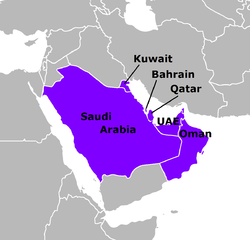
 After the recent news on the proposed single currency for East Africa, could there be another group of countries moving towards a single currency? The Gulf Cooperation Council (GCC) consists of Bahrain, Kuwait, Qatar, Saudi Arabia, the United Arab Emirates and Oman. These six countries have been discussing a currency union similar to the Eurozone for more than 15 years. There was once even a name for the currency: the Khaleeji. That currency was turned down however in 2009 and talks seemed to go nowhere from then on. Sometimes they agreed on a single currency, then one country said no, then two countries etc. Eventually Oman and the United Arab Emirates pulled out of these talks altogether.
After the recent news on the proposed single currency for East Africa, could there be another group of countries moving towards a single currency? The Gulf Cooperation Council (GCC) consists of Bahrain, Kuwait, Qatar, Saudi Arabia, the United Arab Emirates and Oman. These six countries have been discussing a currency union similar to the Eurozone for more than 15 years. There was once even a name for the currency: the Khaleeji. That currency was turned down however in 2009 and talks seemed to go nowhere from then on. Sometimes they agreed on a single currency, then one country said no, then two countries etc. Eventually Oman and the United Arab Emirates pulled out of these talks altogether.
Now after a few years of silence on the subject, there is all of a sudden a rumour that the single currency will be announced at the end of December. This common currency to be announced by Bahrain, Kuwait, Qatar and Saudi Arabia would be pegged to the dollar, an anonymous source close to decision-makers said.
In September, an official of the European Central Bank (ECB) said that the GCC should not introduce a common currency before its members have a clear common objective. Yves Mersch, an executive board member of the ECB, reportedly said at a global financial summit that no union of states would be ready for a common currency if there was no political consensus. The Wall Street Journal, which also reported on the matter, states: "... analysts and observers are mostly sceptical of this happening anytime soon. For one, they say, there has been no news that significant progress has been made toward a monetary union."
The GCC itself denounced the rumours last night, saying: "The Monetary Council affirms that the reports by some newspapers and websites over the date of the issuing of the single Gulf currency are completely false, not based on accurate information nor reliable sources".
After the recent acquisition of the new Canadian 5 dollar with its space themed backside, I showed the note to a colleague who is also an amateur astronomer and writes for a Dutch blog on astronomy and the world of space exploration. His enthusiasm gave me the idea for a special theme blog on space and astronomy banknotes.
My goal is to compile an overview of banknotes which have a theme or show objects related to space, astronomy, satellites, astronomers, telescopes, observatories and so on. You can find this special blog by clicking the banner on the right or below.
The first three banknotes have been posted:
 On 4 December 2012 Norway announced that the process of developing a new banknote series had officially started. The first step for the Norges Bank was to choose a theme for the new series. Once the theme had been approved, the national bank would choose the main elements of the banknotes' design.
On 4 December 2012 Norway announced that the process of developing a new banknote series had officially started. The first step for the Norges Bank was to choose a theme for the new series. Once the theme had been approved, the national bank would choose the main elements of the banknotes' design.
That theme has now be chosen and it´s The Sea, reflecting its importance for Norway's business sector and economic prosperity. This is from the press release:
Norges Bank started work on the new banknote series in autumn 2012. This will be the eighth series. There is a need to enhance banknote security to ensure that current and future Norwegian banknotes are resistant to counterfeiting. The work is well underway and a number of important decisions concerning the new series were made by Norges Bank's Executive Board in the fourth quarter of 2013. The theme, denomination breakdown, material, colours, language and size of the notes have now been decided.
"Finding a theme for the new banknote series has been an extensive and exciting process, with a creative input of ideas from various contributors," says Trond Eklund, Director of Norges Bank's Cashier's Department.
Norges Bank has sought to find a theme that runs through the banknote denominations, binding them together into a banknote series. "The Sea" provides a virtually infinite array of visual possibilities. The theme will be reflected both on the obverse and reverse face of the notes, breaking with the tradition of portraiture.
"We have chosen a theme we consider to be original and particularly relevant for Norway, which is a small country but a major coastal nation. Norway has a total coastline of 83 000 km, the longest in Europe. The use of marine resources, combined with the use of the sea as a transport artery, has been crucial to the development of Norway's economy and society," says Eklund.
The current denomination breakdown of 50 – 100 – 200 – 500 – 1000 and the current main colours will be retained for the new series. All the notes, which will be printed on cotton paper, will be 70 mm in height, but the width will increase with each denomination by 7 mm. This means that the 50 krone note will be 126 mm wide, while the 1000 krone note will be 154 mm wide. The Bank's official name will continue to be written in Norway's two official written languages, Bokmål and Nynorsk, i.e. Norges Bank and Noregs Bank.
In order to attract as many creative and interesting design proposals as possible, Norges Bank is now in the process of launching a design competition. The competition will be run in two stages; first a pre-qualification competition and then the final competition between five to eight participants to select the winning design.
No word yet on a timeline or a proposed date of issue.
 The member states of the East African Community (Burundi, Kenya, Rwanda, Tanzania and Uganda) have signed a monetary-union deal. One aspect of this deal is a 10-year timeline for the establishment of a regional single currency. The agreement is the result of nearly a decade of talks. The member states will now try to establish institutions (like a regional central bank and a statistics body) to support the single currency.
The member states of the East African Community (Burundi, Kenya, Rwanda, Tanzania and Uganda) have signed a monetary-union deal. One aspect of this deal is a 10-year timeline for the establishment of a regional single currency. The agreement is the result of nearly a decade of talks. The member states will now try to establish institutions (like a regional central bank and a statistics body) to support the single currency.
"With a total population of about 135 million people, East Africa is becoming an investment magnet following a flurry of natural-gas and oil discoveries. Uganda and Kenya have discovered huge amounts of oil, while Tanzania boasts of huge natural-gas reserves. International companies have already started exploiting these resources, and the region is poised to become the next major energy hub in Sub Saharan Africa."
|
|
 After the recent introduction of the new 10 dinar note Tunisia will issue a new banknote in the first quarter of 2014. This time the note will have a denomination of 5 dinar.
After the recent introduction of the new 10 dinar note Tunisia will issue a new banknote in the first quarter of 2014. This time the note will have a denomination of 5 dinar. Interesting news from the small kingdom Bhutan: the low denominations of 1 and 10 ngultrum will no longer be printed by
Interesting news from the small kingdom Bhutan: the low denominations of 1 and 10 ngultrum will no longer be printed by 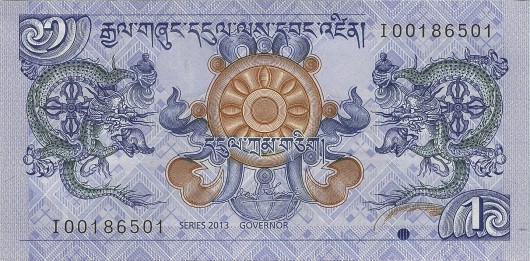
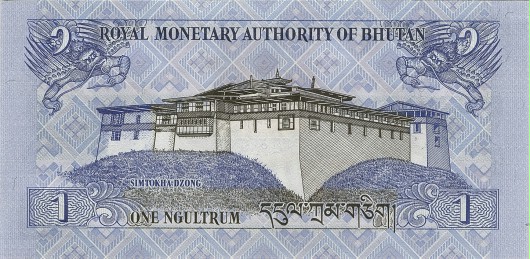
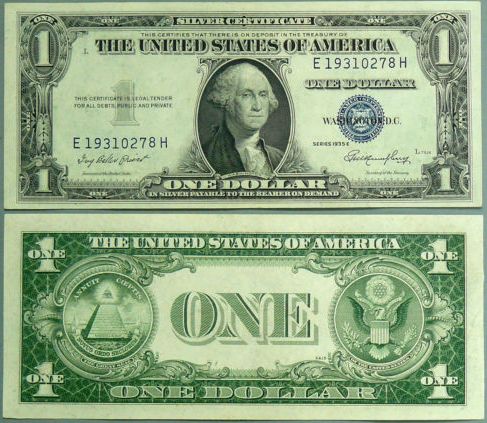
 From the
From the  An article on
An article on 
 The Central Bank of Peru (
The Central Bank of Peru (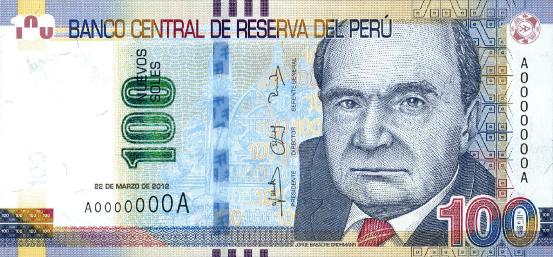
 An article on
An article on 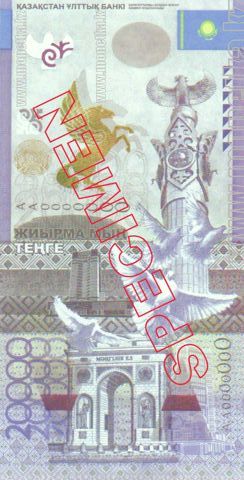
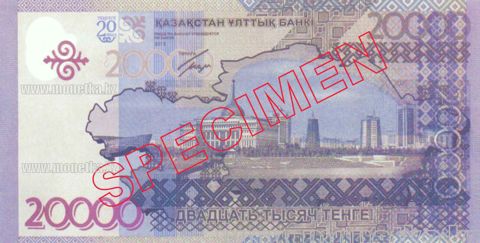

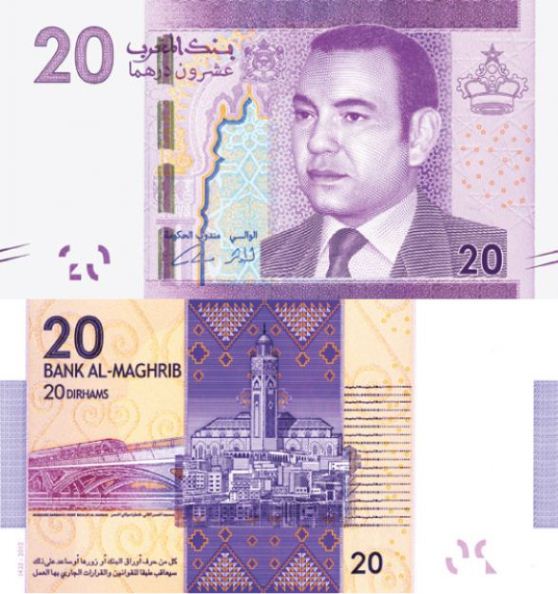
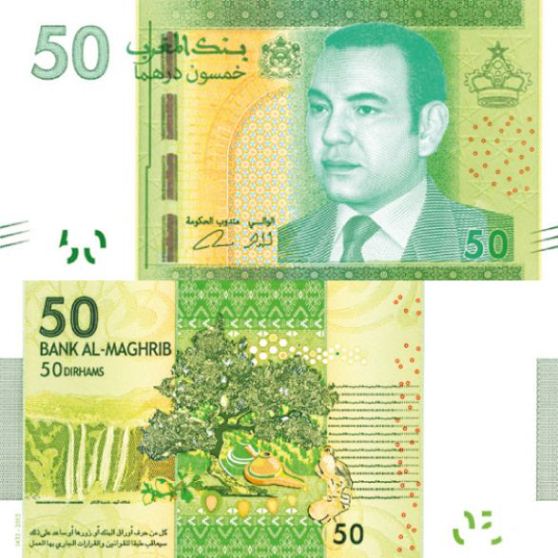
 The new €10 banknote will be unveiled on
The new €10 banknote will be unveiled on 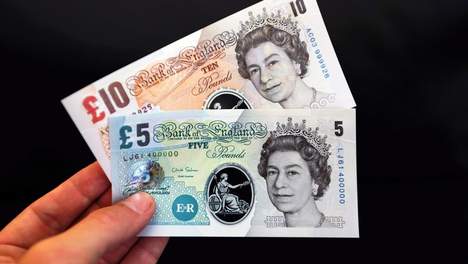
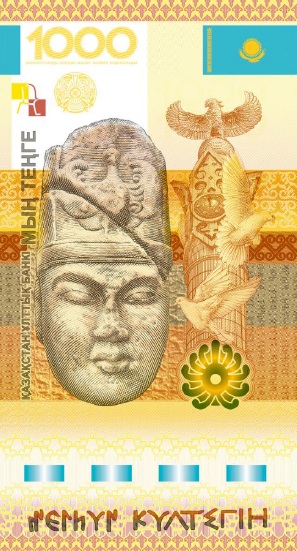
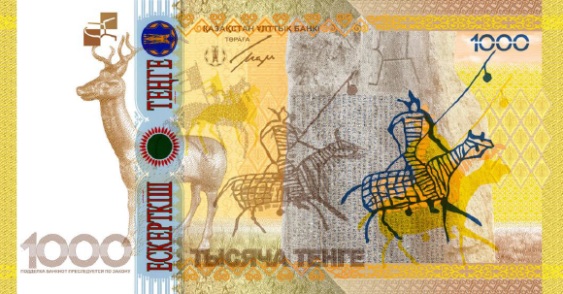

 The Central Bank of Russia (CBR) has announced that a symbol for its ruble has been chosen. Over the last month more than 280,000 people took part in a vote to choose the new symbol. The chosen graphic uses the Cyrillic letter “P” which has its lower part crossed by a horizontal strip, Elvira Nabyullina, CBR chairman said. This version of the ruble symbol got more than 61% of the votes, with the second most popular receiving about 19% of votes.
The Central Bank of Russia (CBR) has announced that a symbol for its ruble has been chosen. Over the last month more than 280,000 people took part in a vote to choose the new symbol. The chosen graphic uses the Cyrillic letter “P” which has its lower part crossed by a horizontal strip, Elvira Nabyullina, CBR chairman said. This version of the ruble symbol got more than 61% of the votes, with the second most popular receiving about 19% of votes.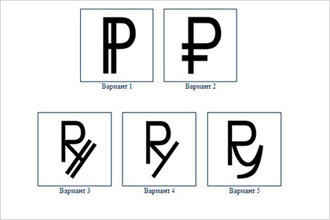
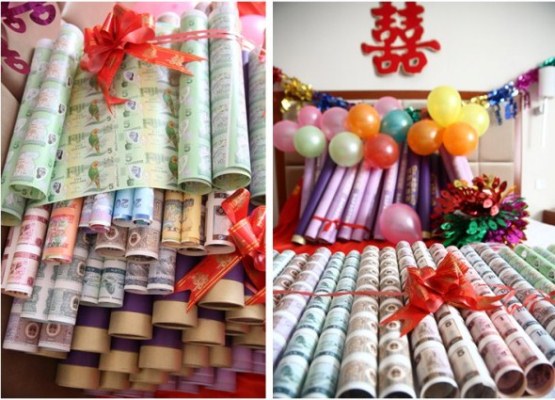
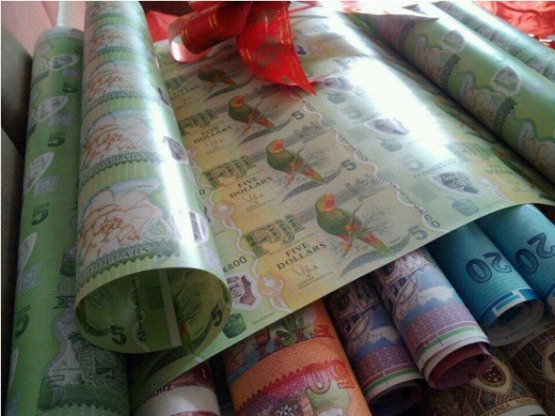
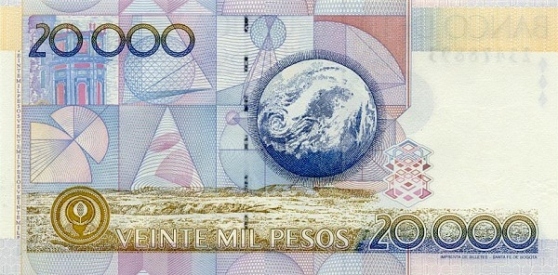
 THE euro crisis has put most people off currency unions. But not in Africa, it seems. In November the leaders of five countries of the East African Community (EAC) agreed to form a monetary union within ten years. A month before West African politicians agreed on a plan to introduce a new shared currency, the eco, over the next few years. It should eventually subsume West Africa’s existing currency bloc—but not its central African cousin.
THE euro crisis has put most people off currency unions. But not in Africa, it seems. In November the leaders of five countries of the East African Community (EAC) agreed to form a monetary union within ten years. A month before West African politicians agreed on a plan to introduce a new shared currency, the eco, over the next few years. It should eventually subsume West Africa’s existing currency bloc—but not its central African cousin.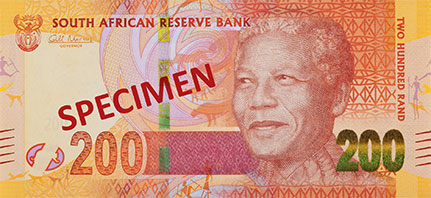
 The US
The US 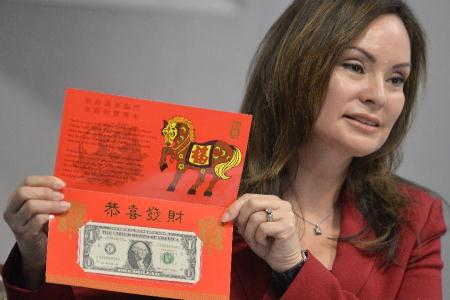
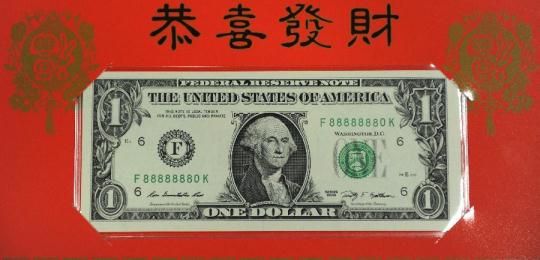
 The Bermuda Monetary Authority has
The Bermuda Monetary Authority has 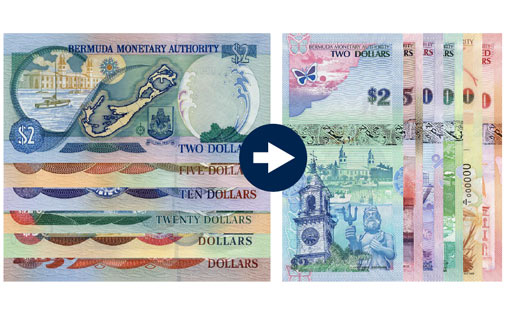

 After the recent news on the proposed
After the recent news on the proposed 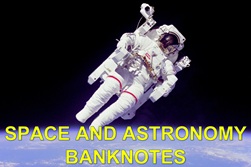
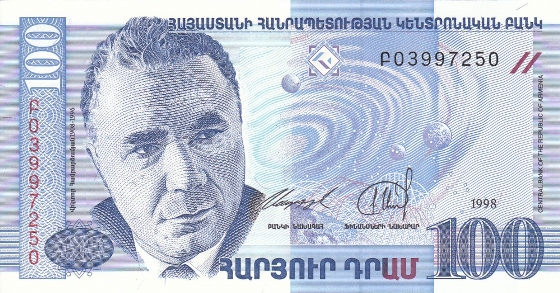
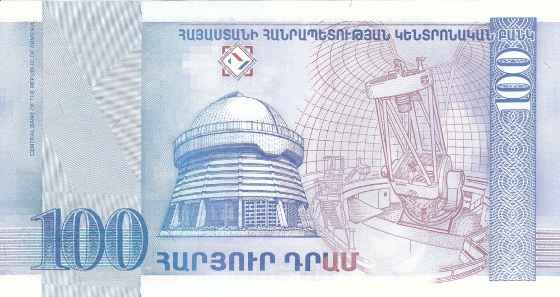
 On 4 December 2012 Norway
On 4 December 2012 Norway  The member states of the
The member states of the 